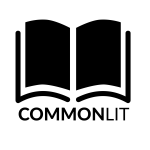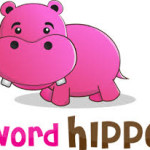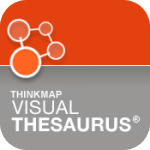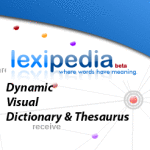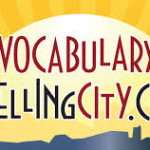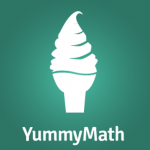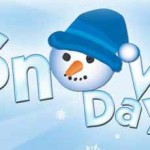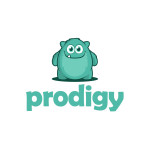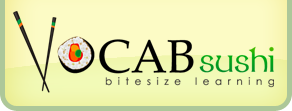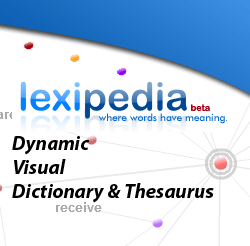Vocabulary Strategies
Scroll to the bottom of this page and you will find analog and digital activities for vocabulary in your classroom. Try embedding some of these activities in your lesson plans today!
Research has consistently found that vocabulary plays a fundamental role in the academic achievement of U.S. students in Grades K–12. Knowing vocabulary words is key to reading comprehension. The more words a child knows, the better he or she will understand the text. Teachers can teach vocabulary directly or indirectly. Using a variety of effective methods will increase the student’s ability to learn new words.

“A student’s maximum level of reading comprehension is determined by his or her knowledge of words. This word knowledge allows students to comprehend text. As the teacher, you can explicitly teach word meanings to improve comprehension. However, to know a word means knowing it in all of the following dimensions:
- The ability to define a word
- The ability to recognize when to use that word
- Knowledge of its multiple meanings
- The ability to decode and spell that word
Therefore, it is vitally important to teach key words that children will need to comprehend texts, learn the content in those texts, and pass tests. Words are taught through direct instruction of word meanings as well as through discussions about words (including prefixes, suffixes, and roots) – all combined with a lot of reading.” (Colorin Colorado, 2007)
Limited vocabulary is the first “red flag” indicating a probable learning gap in a child’s reading comprehension. While vocabulary can be picked up through dialogue and conversation, research shows that is it grown in the formidable years through learning to read and building a capacity for reading fluency and comprehension. It continues to grow through the secondary and college level moving from concrete to more abstract skills and concepts.
The more we encourage children to read each day, the better developed their vocabulary becomes. Research has found that children’s exposure to language-rich environments is related to their socioeconomic and welfare status; that is, children from professional families enter school knowing almost twice as many words as those from working class backgrounds and almost three-and-a-half times more words than those with welfare backgrounds.
Vocabulary consists of the words we understand when we hear or read them (receptive vocabulary) and words we speak or write (expressive vocabulary). Knowing a variety of words is important for language development and reading comprehension. The English language has the largest vocabulary or lexicon in the world. And our language is continually growing! (Think of words like widget, blog, info-sharing, selfie!) Most children begin first grade with about 6,000 words of spoken vocabulary. They will learn 3,000 more words per year through third grade.
There are two evdience based best practices that US Digital Literacy highly recommends to teachers for building and increasing vocabulary in their students. They are Morphology and Tiered Vocabulary.
Morphology
Morphology Linguistics : the study and description of how words are formed in language
The study of English words derived from Greek and Latin roots is the study of Morphology. Think of the early years of learning, teachers help studenst learn words by introducing word families, rimes, and phohgrams. The generative approach began with studies of Naom Chonsky in the 1950s. This is not a new idea. It is rather a renewed idea in that students should be taught Latin and Greek morphemes as a word family so they can build upon meaning. A study of over 100 4th and 5th grade students found that “Students with greater understanding of morphology also have higher reading comprehension scores”.
Examples:
Teacher teaches prefix bi- meaning two
students learn bicycle, bimonthly, bicoastal, bisect
Teacher teaches root word geo- meaning earth
students learn geology, geography, geode, geographer
Introducing one Latin or Greek root a week and spending only 5-10 minutes a day will increase gains significantly in building vocabulary wil will transfer to reading.
A five day plan for teaching morphology may be: (Specific idea credited to Webinar: Comprehension-Going Beyond Fluency with Dr. Tim Rasinski sponsored by www.SciLearn.com)
Day 1 Introduce root and meaning, brainstorm words, build their own words
Day 2 Students read a selection with the root
Day 3 Students work on teacher directed activity with the root: cloze passage, word sorts, word creations
Day 4 Students play game: Word-O, Word Ladders
Day 5 Student is assessed
Note: Morphology can be started as early as second grade and should continue beyond the high school years.
Tiered Vocabulary
The Definition of Academic Vocabulary
Academic language refers to the sentence structures (syntax) and vocabulary (both spoken and written) commonly used to learn across academic disciplines and within specific content areas. Tiers describe how academic vocabulary differs from more common, everyday language.
Isabel Beck suggests educators consider three types of vocabulary words—three tiers of vocabulary—for teaching and assessing word knowledge. A word’s frequency of use, complexity, and meaning determines into which tier it will fall. Those with mature vocabularies and age-appropriate literacy skills understand and use words from all three tiers. The three tiers of vocabulary, Tier I—Basic Vocabulary, Tier II—High Frequency/Multiple Meaning, and Tier III—Subject Related.
Tier I consists of the most basic words. While in early years direct instruction is given with sight words, these words rarely require direct instruction in upper grades. They typically do not have multiple meanings. Tier 1 vocabulary includes the words that children encounter in readers which are designed to support the development of their decoding, sight-reading, and fluency skills. Sight words, nouns, verbs, adjectives, and early reading words occur at this level. Examples of tier one words are: book, girl, sad, run, dog, and orange. There about 8,000 word families in English included in Tier I.
Tier II consists of high frequency words that occur across a variety of domains. That is, these words occur often in mature language situations such as adult conversations and literature, and therefore strongly influence speaking and reading.
Standards for Tier II words:
- Important for reading comprehension
- Characteristic of mature language users
- Contain multiple meanings
- Increased descriptive vocabulary (words that allow students to describe concepts in a detailed manner)
- Used across a variety of environments (generalization)
The meanings of Tier II words are either consistent across disciplines (e.g., “compare,” “contrast,” and “synthesize”), or they can vary by discipline (e.g., “point of view,” “plot,” “diagram,” and “image”). Tier II words are the most important words for direct instruction because they are good indicators of a student’s progress through school. Other examples of tier two words are: masterpiece, fortunate, industrious, measure, and benevolent. There are about 7,000 word families in English (or 700 per year) in Tier II.
Tier III consists of low-frequency words that occur in specific domains. Domains include subjects in school, hobbies, occupations, geographic regions, technology, weather, etc. We usually learn these words when a specific need arises, such as learning amino acid during a chemistry lesson. Examples of tier three words are: economics, isotope, asphalt, Revolutionary War, and, crepe. The remaining 400,000 words in English fall in this tier.
It important to remember that Tier II and III words are not all clear-cut in their tier classification. There is more than one way to select the words. Word knowledge is subject to personal experience.
US Digital Literacy proposes that educators explicitly teach the Tiers of Vocabulary so students will have a meta-cognitive understanding of their own vocabulary acquisition process. This helps students to have an enduring understanding of the importance of the words they are learning as well as how they fit into English Language Arts which is becoming a lost art in America. Students then begin to build better success rates and ability to transfers skills to authentic learning.
Additional classroom strategies include:
Pre-teach Vocabulary: Explicit teaching of vocabulary prior to a lesson can take on many forms. Drawing or sketching a word helps provide a visual connection to the meaning of the word. Sharing pictures or actual objects of items helps students make concrete connections to new words. Role playing or using gestures also helps build understanding.
Create a language rich classroom: Use labels to identify objects in your classroom. Provide word walls and anchor charts to display key vocabulary. Utilize desktop cards to reinforce unit vocabulary.
Model the use of appropriate vocabulary: The use of more sophisticated language, being exposed to a variety of genres, reading aloud and discussing texts that challenge listening comprehension, playing word games that involve reflection about the relation between the structure and meaning of words, having multiple opportunities for using new words in multiple contexts, and learning about specialized topics and concepts are appropriate methods for the teacher to model formal vocabulary.
Explicitly teach, reinforce, and revisit:
- Analysis of word parts and structures
- Use of context clues
- Appropriate use of reference tools (for example, dictionaries and thesauruses)
- Development and articulation of personal approaches for building vocabulary knowledge
- Lead discussions of student-friendly definitions.
- Provide sentence examples with contexts that make the meaning of each new vocabulary word transparent.
- Present audio and visual support with opportunities for students to hear and see a word, its syllables, sounds, definition, and its application.
- Deliver practice of vocabulary words within context-rich sentences.
- Use synonym and antonym activities to deepen understanding of word meanings and how they relate to other words.
- Allow students to apply the word using games and word puzzles.
- Have students use graphic organizers, such as concept circles, word webs, and word squares.
- Support experimentation and reward use of even partially known vocabulary words, particularly in student writing.
- Embed new vocabulary words into writing or discussion prompts, homework assignments, quizzes, and classroom instruction.
Monitor and assess students’ learning: Allow students multiple opportunities to use words they are learning. Remember the “rule of seven” attempts to move new information from working memory to long term memory. Also, hold students accountable for using the words both in speech and writing. And, give students multiple attempts to show mastery.
Specific activities are outlined below. Analog activities are included as well as some of our favorite online activities and websites that help promote vocabulary. For the analog activities click the arrow down button to open each box for a description of the activity plus the resource. For the digital activities click the logo to go to a description page with a link to the website. (Most of the websites we use are free or are at a freemium. But some charge a fee.)


